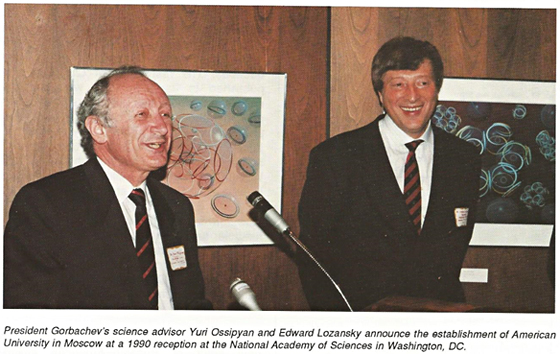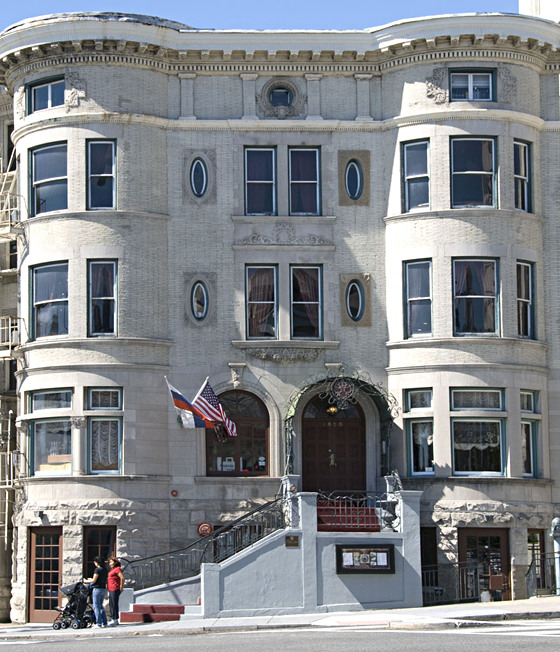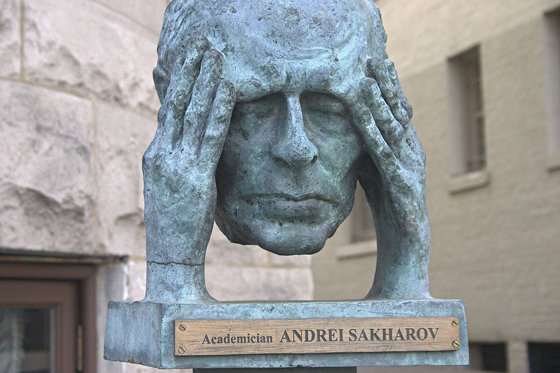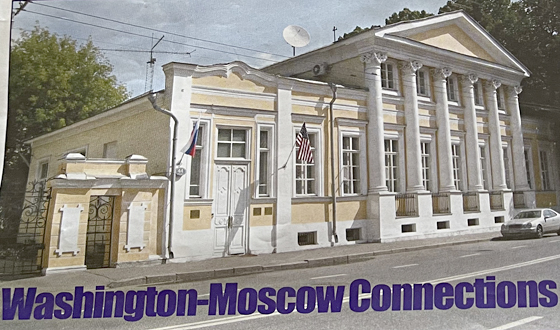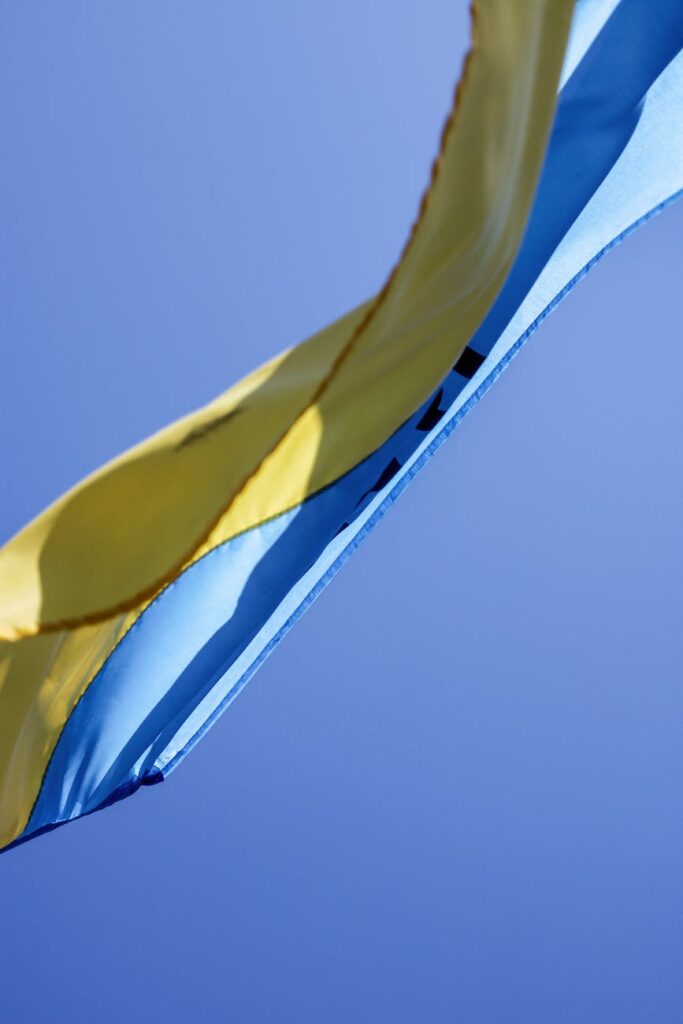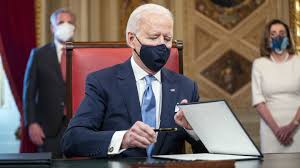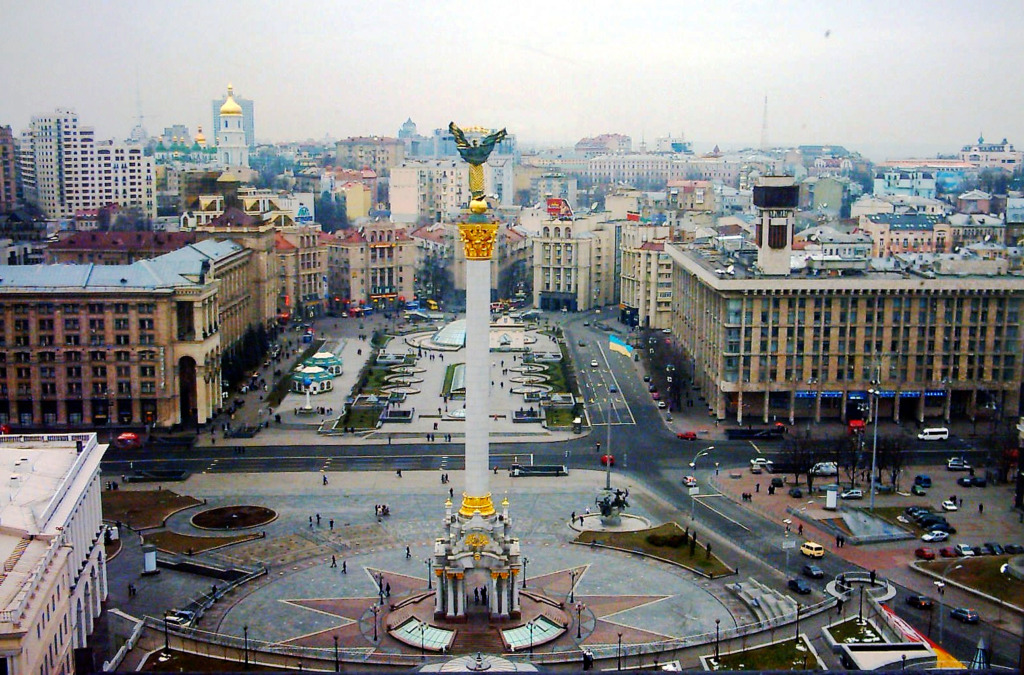
By Joe Lauria, Consortium News, 8/30/23
The whitewashing of the historical context for the war in Ukraine has resulted in a profoundly embarrassing episode for the United States embassy in Prague.
An Aug. 21 Tweet from the embassy with a message roughly translated from Czech to mean “Aggression always comes from the Kremlin,” showed two photographs: the first displayed Soviet tanks in the streets of Prague in 1968. The second showed fire burning in front of a building and was marked “Odesa 2023.”
Twitter users were quick to point out the embassy’s error. “The bottom photo is from 2014 Odessa Clashes where pro federalism (mostly pro Russian) got burned alive in clash with Ukrainian nationalist(s) while police and fireman stood watching. To this day no one was jailed,” wrote one commenter.
Someone else wrote: “You vile people, twisting the history to whitewash the crimes of the Ukrainian far-right against peaceful Ukrainians, and in fact using their crimes with the diametrically opposite meaning!”
The embassy got the message. “Thanks for the heads up and apologies for the incorrect use of the graphic. We wanted to illustrate the ongoing Russian aggression against Ukraine and we chose the wrong photo,” it wrote.
That prompted another Twitter user to sarcastically respond: “You wanted to illustrate the Ukrainian aggression against the Russian people and you chose the right photo.”
The embassy then deleted the Tweet. It never acknowledged the event depicted in the bottom photo. That signifies either ignorance of the event or intentional suppression of it. The massacre in Odessa is a key point in understanding the cause of the war and has been buried by the West, creating a propagandized narrative about Russia’s intervention.
May 2, 2014
Demonstrators in Odessa on May 2, 2014 were protesting the violent overthrow two and a half months earlier on Feb. 21, 2014 of the democratically-elected President Viktor Yanukovych. U.S. involvement in the coup is revealed in a leaked telephone conversation between Undersecretary of State Victoria Nuland and Geoffrey Pyatt, the U.S. ambassador to Ukraine at the time.
On May 2, football hooligans and far-right groups deliberately set fire to a labor union building in Odessa where protestors against the coup had taken refuge. As many as 48 people were killed. Police did not intervene. Video footage shows at least one police officer and others firing their guns into the building. The crowd is cheering as many of the people trapped inside jumped to their deaths.
Pleas at the time from the United Nations and the European Union for Ukraine to investigate were ignored. Three Ukrainian local government probes were stymied by the withholding of secret documents.
Click on photo for video showing atack against pro-Russian protestors on May 2, 2014, including policeman firing on them.
A report on the incident from the European Council (EC) at the time makes clear it did not conduct its own investigation but relied on local probes, especially by the Verkhovna Rada’s Temporary Investigation Commission.
The EC complains in its reports that it too was barred from viewing classified information. The EC said the Ukrainian government probes “failed to comply with the requirements of the European Human Rights Convention.”
Relying only on the flawed local inquiries, the EC reports that pro-Russian, or pro-federalist, protestors attacked a pro-unity march in the afternoon, prompting street battles. Then:
“At around 6.50 p.m. pro-federalists broke down the door [of the trade union building] and brought inside various materials, including boxes containing Molotov cocktails and the products needed to make them. Using wooden pallets which had supported tents in the square, they blocked the entrances to the building from the inside and erected barricades. When they arrived at the square at around 7.20 p.m., the pro-unity protesters destroyed and set fire to the tents of the Anti-Maidan camp. The remaining pro-federalism protesters entered the Trade Union Building, from where they exchanged shots and Molotov cocktails with their opponents outside. …
At about 7.45 p.m. a fire broke out in the Trade Union Building. Forensic examinations subsequently indicated that the fire had started in five places, namely the lobby, on the staircases to the left and right of the building between the ground and first floors, in a room on the first floor and on the landing between the second and third floors.
Other than the fire in the lobby, the fires could only have been started by the acts of those inside the building. The forensic reports did not find any evidence to suggest that the fire had been preplanned. The closed doors and the chimney effect caused by the stairwell resulted in the fire’s rapid spread to the upper floors and a fast and extreme rise in the temperature inside the building.”
The local investigation thus blamed the anti-Maidan protestors for starting the fire throughout the building. But this video, which shows events on that day leading to the fire, depicts the main blaze in the lobby. It shows Right Sector extremists lobbing Molotov cocktails into the building and a policeman firing his gun at it.
It does not show any cocktails thrown from the building. It doesn’t show clashes earlier in the day, though one pro-unity protestor says they were attacked at Cathedral Square and they’ve come to burn the anti-Maidan protestors in the building for revenge.
The Fallout
Eight days after the Odessa massacre, coup resisters in the far eastern provinces of Donetsk and Lugansk, bordering on Russia, voted in a referendum to become independent from Ukraine.
The U.S.-backed coup government had launched a military attack two weeks earlier, on April 15, 2014 against ethnic Russians in Donbass protesting against the coup, including seizing government buildings, in defense of a democratic election. This phase of the war continued for nearly eight years, killing thousands of people before prompting Russian intervention in the civil war on Feb. 24, 2022.
Russia says it had proof that the Ukrainian military, which had amassed 60,000 of its troops at the line of contact, was on the verge of an offensive to retake the Donbass provinces. OSCE maps showed a dramatic increase of shelling from the government side into the rebel areas in February last year.
Russia invaded Ukraine with the stated purpose of “de-Nazifying” and “de-militarizing” Ukraine to protect Russian-speakers and the people of Donbass. The events in Odessa on May 2, 2014 played a role. In a televised address three days before the invasion, Russian President Vladimir Putin said:
“One shudders at the memories of the terrible tragedy in Odessa, where peaceful protesters were brutally murdered, burned alive in the House of Trade Unions. The criminals who committed that atrocity have never been punished, and no one is even looking for them. But we know their names and we will do everything to punish them, find them and bring them to justice.”
Entrance to The New York Times. (Niall Kennedy, Flickr, CC BY-NC 2.0)
The New York Times buried the first news of the massacre in a May 2, 2014 story, saying “dozens of people died in a fire related to clashes that broke out between protesters holding a march for Ukrainian unity and pro-Russian activists.”
The Times then published a video report that said dozens were killed in a fire, “and others were shot dead when fighting between pro- and anti-Russian groups broke out on the streets of Odessa.” The video narrator says “crowds did their best to save lives.” It quotes Ukrainian police saying a “pro-Kiev march was ambushed … petrol bombs were thrown” and gun battles erupted on the streets.
The late Robert Parry, who founded Consortium News, reported on Aug. 10, 2014:
“The brutality of these neo-Nazis surfaced again on May 2 when right-wing toughs in Odessa attacked an encampment of ethnic Russian protesters driving them into a trade union building which was then set on fire with Molotov cocktails. As the building was engulfed in flames, some people who tried to flee were chased and beaten, while those trapped inside heard the Ukrainian nationalists liken them to black-and-red-striped potato beetles called Colorados, because those colors are used in pro-Russian ribbons.
‘Burn, Colorado, burn’ went the chant.
As the fire worsened, those dying inside were serenaded with the taunting singing of the Ukrainian national anthem. The building also was spray-painted with Swastika-like symbols and graffiti reading ‘Galician SS,’ a reference to the Ukrainian nationalist army that fought alongside the German Nazi SS in World War II, killing Russians on the eastern front.”
Consequences of Suppressing Information
Though they were reported at the time, the events of May 2, 2014 have virtually vanished from Western media. It was one of the seminal events that led to Russia’s eventual intervention in the Ukrainian civil war.
Similarly the role Ukrainian neo-Nazis played in the 2014 coup and the 8-year war on Donbass — which had been widely reported on at the time in Western mainstream media — disappeared, erasing the context of Russia’s invasion. The December 2021 Russian offer of treaties with the U.S. and NATO to avoid war was forgotten too. After Russian intervention, a campaign was launched by so-called disinformation monitors to try to suppress alternative media from reporting on these facts.
The consequences of these efforts is clear. The aggression of Kiev’s coup regime against ethnic Russians in Ukraine, which led to Russia’s intervention, has been airbrushed from history.
What’s left is a cartoon version that says the conflict began, not in 2014, but in February 2022 when Putin woke up one morning and decided to invade Ukraine. There was no other cause, according to this version, other than unprovoked, Russian aggression against an innocent country.
Thus the U.S. Embassy in Prague either deceptively used that photo, or more likely, had no idea what happened in Odessa in 2014, as it has hardly been reported on since, thinking that a prime example of Ukrainian aggression against ethnic Russians was instead a photo showing Russian aggression against Ukrainians.
This is what happens when you believe your own propaganda.
Joe Lauria is editor-in-chief of Consortium News and a former U.N. correspondent for The Wall Street Journal, Boston Globe, and numerous other newspapers, including The Montreal Gazette, the London Daily Mail and The Star of Johannesburg. He was an investigative reporter for the Sunday Times of London, a financial reporter for Bloomberg News and began his professional work as a 19-year old stringer for The New York Times. He is the author of two books, A Political Odyssey, with Sen. Mike Gravel, foreword by Daniel Ellsberg; and How I Lost By Hillary Clinton, foreword by Julian Assange. He can be reached at joelauria@consortiumnews.com and followed on Twitter @unjoe
